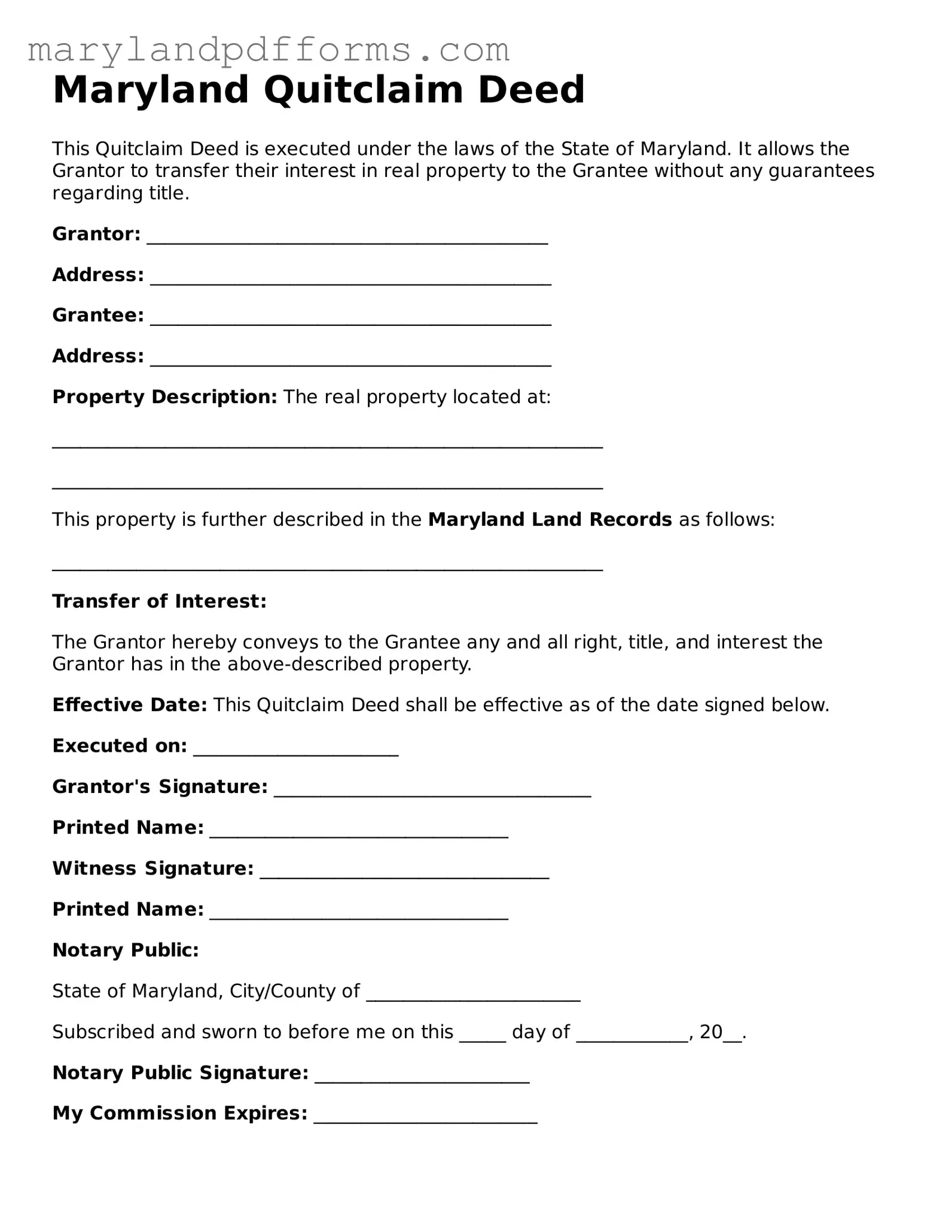Maryland Quitclaim Deed - Usage Steps
Once you have your Maryland Quitclaim Deed form ready, it’s time to fill it out. This process involves providing specific details about the property and the parties involved. Make sure to have all necessary information at hand to ensure a smooth completion.
- Begin by entering the date at the top of the form.
- In the section labeled "Grantor," write the name of the person or entity transferring the property. Ensure that the name matches official documents.
- Next, in the "Grantee" section, fill in the name of the person or entity receiving the property.
- Provide the complete address of the Grantee, including city, state, and ZIP code.
- Describe the property being transferred. Include the address and any legal descriptions available. This may involve referencing a previous deed or property records.
- Check the box that indicates whether the property is residential or commercial, if applicable.
- Sign the form in the designated area. The Grantor must sign it in the presence of a notary public.
- Have the notary public sign and seal the document to verify the authenticity of the signature.
- Finally, make copies of the completed deed for your records before submitting it to the appropriate county office for recording.
After filling out the form, you’ll need to file it with your local county office. This step is crucial to ensure the transfer is legally recognized. Keep a copy for your personal records as well.
